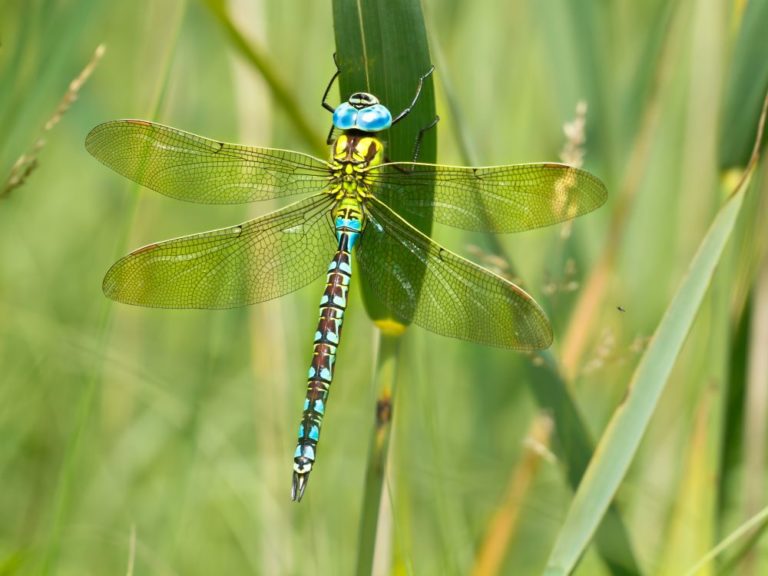With the warmth of May comes an increase in vibrant colours as flowers bare their leaves and petals to the sun. In woodlands you may be fortunate to witness swathes of bluebells, undulating in the breeze. Stop and breathe in deeply to enjoy their delicate scent. Meanwhile, the deceptively named red campion, with its small pink flowers, makes an appearance on the woodland peripheries and frothy white blossoms of cow parsley now spring up on roadside verges offering an important food source for insects.
Tadpoles play an important part in the food chain
Tadpoles come out en masse to ensure that at least some survive becoming a hearty meal for the birds, fish, hedgehogs or newts. This event really is a true wonder, with nature accommodating the vulnerability of the young, as less than 0.5% of the thousands spawned will reach adulthood.
Graceful dragonflies and damselflies make an appearance
Dragonflies and damselflies now also begin to emerge. These huge-eyed aeronauts start life as an egg deposited in or around a body of water. Unlike many insects, both dragon and damselflies are carnivorous: their larva seek nutrients from other insects, tadpoles, sometimes even fish. A larva can spend up to two years under water, growing and shedding its skin anywhere between five to fifteen times before it takes to the air as an adult. And the difference between the two? Apart from the dragonfly generally being a lot bigger, its eyes more prominent, the damselfly rests with its wings folded, the dragonfly, its wings outspread.
Do: Leave an area of the garden unmown. Dandelions, daisies and red clover often sneak in amongst the blades of grass. If you leave them long enough to flower you will be rewarded with the sight of bees busily collecting the bounty of pollen and nectar. Honey bees and bumblebees stash this in their pollen baskets, their ‘corbiculae’, before they fly off to collect more elsewhere. Better still, encourage wildflowers with cuttings or rootlets from your BioScapes unit and transplant them to different areas of the garden. Cut the unmown areas in August once they are past their best, as this will encourage seeds to set.
Get involved: No Mow May: https://www.plantlife.org.uk/campaigns/nomowmay/
International day for biodiversity https://www.cbd.int/idb/
Last updated [06/04/23].


